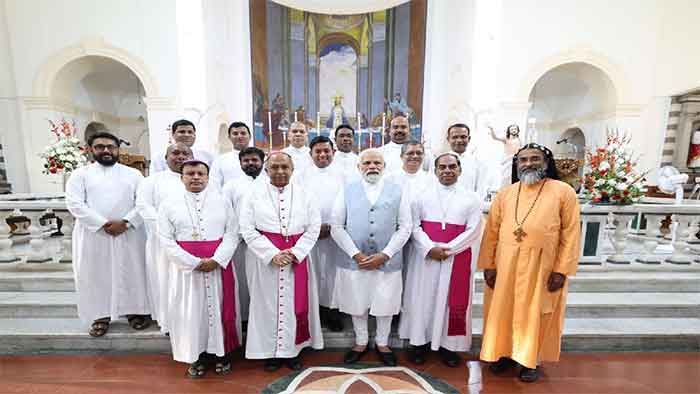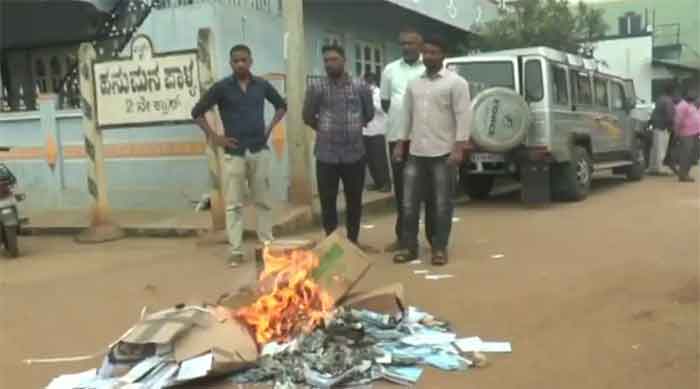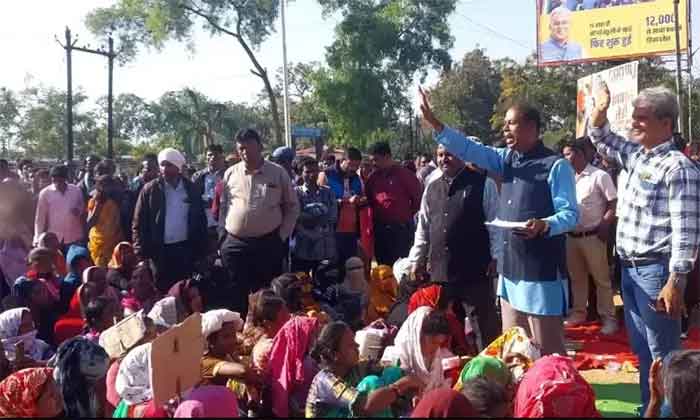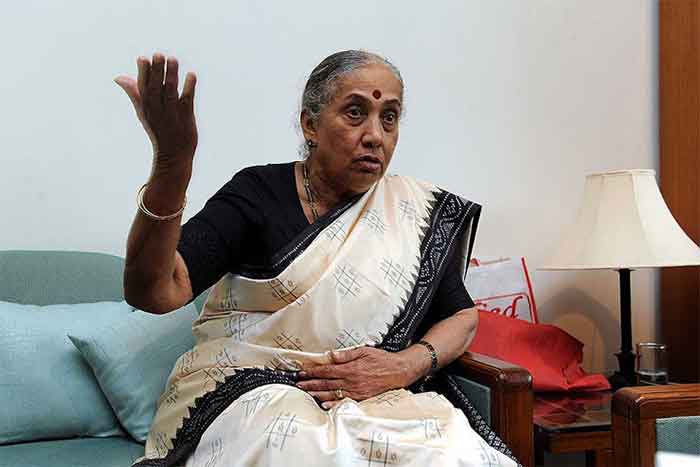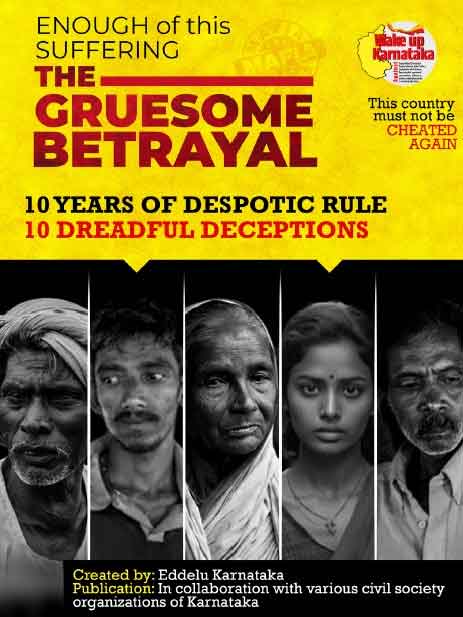A Brief Report on the violence against the Church‐going Adivasi Community of Narayanpur and Kondagaon in Bastar, Chhattisgarh
Summary
A 6‐member team of CBA visited the church‐going community2 of Narayanpur and Kondagaon on 24.12.2022, who had been driven out of their traditional villages and had taken shelter in the Indoor Stadium at Narayanpur following large scale violence against the community on 18.12.2022. Over 450 church‐goers from approximately 16 villages in Narayanpur and Kondagaon, a large majority of whom were women and young children, had sought shelter in the Indoor Stadium. Some of these had been beaten up and physically driven out of their homes by other villagers; while others had fled their villages out of fear after receiving multiple warnings, beatings and ultimatums to renounce the church.
Most of these displaced people had been regularly going to church for the past 5‐8 years, but tensions have erupted only over the past few months following the formation of the BJP‐RSS backed Janjaati Suraksha Manch, which has been demanding the de‐reservation of “converted Adivasis”. In spite of the overwhelming understanding that this violence was instigated at the behest of the BJP/ RSS, almost everyone we spoke with affirmed that the village meetings where decisions were taken to oust the churchgoers were only attended by villagers from the village itself, and it was these villagers who were carrying out the beatings and breaking of homes and churches.
The response of the Administration and Police was uniformly lackadaisical and they only swung into action after the massive displacement of people from the villages received national news coverage. Although the Narayanpur Administration opened up the Indoor Stadium to those seeking refuge, they have not provided any relief supplies to these internally displaced people, leaving it to the local Christian organizations to provide them with food rations, warm clothes, bedding, medicines etc. As this report is being written, there are more news reports of fresh meetings and rallies against the church‐going community in various villages of Kondagaon and Narayanpur, even as the authorities are shutting down the community shelters and forcibly returning the people to their villages amidst raging violence. The current spate of violence threatens to drive a deep rift within the Adivasi community, and unless the leadership and community organizations take urgent measures to stop this fanning of hate and violence, all Adivasi struggles for self‐governance and autonomy will be adversely affected.
Background
Over the past few months, there have been increasing instances of anti‐Christian violence in the districts of Kanker, Kondagaon and Narayanpur of Bastar Division. These include the tearing down of houses belonging to the churchgoing community by villagers3, churches and pastors being physically attacked4, and repeated instances of villagers resisting the burial of deceased churchgoers anywhere in the village, even on privately owned land5.
On 18th December 2022, reports were received from over 20 villages in Narayanpur and Kondagaon of violence against the church‐going community6. Most of these villages came under the jurisdiction of Benur Police Station, and while Benur PS itself is in Narayanpur, its jurisdiction extends to villages in both Narayanpur and Kondagaon districts. A few of the affected villages were from the Edaka Police Station, also in Narayanpur. By evening time, about 300 churchgoers who had been forced out of their villages assembled in front of the Narayanpur Collectorate in an impromptu protest. For two whole days, the people camped out in the open, besides the road in front of the Collectorate. Eventually, as pressure mounted from Christian / human rights organizations around the country, the administration agreed to house them in the Indoor Stadium at Narayanpur.
On 24th December, six members of the Chhattisgarh Bachao Andolan from Kanker ‐‐ Kamal Shukla, Keshav Shori, Ramkumar Darro, Shalini Gera, Urmila Kange, and Vishwaranjan Parichha ‐‐ visited the Indoor Stadium at Narayanpur to meet with the people sheltering there and understand the situation at hand.
MAIN FINDINGS
- A coordinated campaign of dispossession and disempowerment
We found that there were almost 450 people sheltering in the Indoor Stadium, a large majority of who were women with young children. They were drawn from roughly 16 villages of Narayanpur and Kondagaon. People in charge of the arrangements were young Christian men associated with different churches of Narayanpur. The number of refuge takers was swelling every day, as more and more villagers kept trickling in.
Everyone we spoke with had similar stories to share. For the past 2‐3 months, there had been village meetings on some Sundays. The churchgoers were not informed of these meetings in advance, and only came to know of them when 10‐15 villagers would show up at their house and ask them to come before the village which had already gathered. In the beginning of this campaign, they had been issued warnings by the village to return to the Adivasi faith or risk being thrown out of the village. Many people reported that they had been beaten at these meetings repeatedly. Both men and women had been beaten, and both men and women were among the attackers. In many different villages, the church goers had been given a deadline of 01.01.2023 – to either give up the church by the New Year, or to leave the village. Several people also spoke about an economic boycott that was being practiced against the churchgoing community.
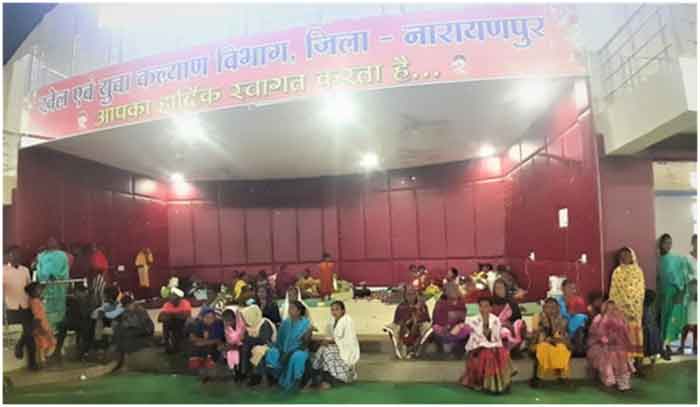
Displaced People at the Naryanpur Indoor Stadium
Many people had been forced to leave their village on the 18th of December in a manner that was strikingly similar over different villages. The churchgoers were summoned before the village and given a choice to give up on their belief in Christ, or to leave the village. At that point, many of the churchgoers in each village gave in to the village pressure and renounced their belief in Christ. Those who refused were physically dragged out of the meeting to the boundary of the village and told that they cannot return. Some of the churchgoers were injured due to the beatings and called the ambulance, but at least in one case, the other villagers refused to let the ambulance transport them, and forced them to leave the village on foot. They were not even allowed to return to their homes briefly to gather some essentials or secure their possessions. They came with just the clothes on their backs, leaving behind their clothes, phones, money, cattle, crops and poultry. We learned that many such expulsions of churchgoers also occurred in the weeks just preceding the 18th of December, and many are still occurring in different villages.
Broken up families with more women oustees than men
The women and children far exceeded the numbers of men in the Indoor Stadium. We learned that many families had been divided, with the women taking shelter in Narayanpur and their menfolk continuing in the village. When asked about the reasons, we were given different answers – in general, it appears that more women go to the church than men do, and hence, they were targeted more by the
village. In some cases, under pressure from the rest of the village, their families themselves had thrown out the women who refused to give up their faith in Christ. In other cases, the women confided in us, that their menfolk had also started attending the Church, but they pretended to renounce Christianity before the village, so that they could continue to tend their fields and look after their animal stock, while sending their women and children to the safety of the Indoor Stadium at Narayanpur.

Majority of those seeking refuge at the Indoor Stadium are women and children
History of church going communities in Benur area
While the Church reportedly made its entry in Benur more than twenty years ago, most of the people we spoke with had started praying at a church about 5‐8 years ago. All the “converts” spoke about adopting the Church after they were cured of some medical ailment by the prayers offered in the Church. Far as we could tell, no actual medical treatments were administered to any convert. They all said that they knew that the prayers would be said for them even if they did not join in the congregation, but they all chose to join it in any case.
Most people had faced some level of opposition from the rest of the village for choosing to join the Church even earlier. But these were isolated incidents and had resolved themselves over time. One person told us that eight years ago, he had beaten in front of the entire village for abandoning his traditional gods and goddesses. But after that incident, he had faced no violence till now, when he had been beaten on three different Sundays in November, before being forced out of the village in December. Another said that the village had raised an objection with the revenue authorities when he had decided to build a Prayer Hall on his privately owned land. But nothing came of that letter, and his Prayer Hall was erected long ago. Every now and then, the churchgoers would be given “samjhaish” (strong advice) by the village to return to the fold of traditional Adivasi Gods and Goddesses, but there had been few instances of violence up until now.
After their faith in Christ started developing, most churchgoers stopped attending the ceremonies of marriage, birth and death of those who did not follow the church. In some cases, it appeared to be voluntary distancing from practices in which they no longer believed, while in other cases, the traditional community appears to have expelled them from these traditional community gatherings. However, the churchgoers still attended the Gram Sabha meetings for secular purposes, and participated in all government schemes of MNREGA etc. The Adivasi communities freely worked on each other’s fields and in their homes, up until now.
Roko, Toko, Thoko – Janjati Suraksha Manch gives an open call for violence against converted Adivasis
This streak of majoritarian violence can be traced back to the maha‐rally of the the RSS/BJP backed Janjaati Suraksha Manch in Narayanpur on 26.4.2022. Formed with the explicit purpose of opposing conversion of Adivasis to Muslim or Christian faith, this Manch has called for “delisting” of converted Adivasis7. Delisting refers to the demand to remove the Adivasis who have converted to Muslim or Christian faiths from the rolls of “Scheduled Tribes” and deny them the benefits of reservations for educational institutions and public employment. (Note that this demand does not oppose those Adivasis who have adopted more Hinduised religious practices.) This was followed by another large mobilization in Revamand (Benur PS) a few months later, a gherao of the Benur PS on 23.12.20228 and a meeting of the Youth Wing of 57 villages in Metawand (Benur PS) on 26.12.2022, among others.

Meeting organized by the Janjaati Suraksha Manch calling for delisting of converted Adivasis, 26.4.202, Narayanpur
These meetings and rallies have openly advocated violence against Adivasis who have adopted other faiths. The slogan of “Roko, Toko, Thoko” has been publicly raised in these meetings and gatherings – exhorting the Adivasis to first, prevent their brethren from going to a different faith (Roko, literally – stop them); if they don’t listen, the next step is to nag or harass them (toko, literally – nag them); and if they still don’t stop, then the advice is to beat them up (thoko, literally – hammer them). Most of these rallies and mahasabhas were led by BJP functionaries, the most prominent amongst them are Bhojraj Nag (ex MLA from Antagarh, BJP), Rupsai Salaam (Narayanpur District President, BJP), Narayan Markam (Benur BJP), Jhari Salaam (Mainpur BJP) etc.
Cooption of village level institutions
While recent violence against churchgoers appears to have originated from the meetings of the Janjati Suraksha Manch, none of the churchgoers reported seeing any “outsider” at the village meetings where they were threatened or physically beaten up. The entire village community, without any visible external support, participated in the violence against them, and in many cases, Gram Sabha resolutions had been passed recommending the excommunication of churchgoers. The traditional village heads – the gaaytas and the patels, as well as the pargana chiefs, appear to have taken an active role in this spate of violence.
It was disturbing to note that many villages interpreted the power of the Gram Sabhas to safeguard and conserve traditional practices and customs under section 4(a) and 4(d) of the PESA Act, and the promise of autonomy under the Fifth Scheduled of the Constitution as official sanction to the Gram Sabhas for punishing and excommunicating the churchgoers. In some instances, the emancipatory slogans of “Lok Sabha na Vidhan Sabha, sabse oonchi Gram Sabha” (Neither the Lok Sabha, nor the Vidhan Sabha – the highest is the Gram Sabha) were used by villagers as they demolished the dwellings of churchgoers. The majoritarian calls for violence by the Janjaati Suraksha Manch seem to have integrated seamlessly with Adivasi assertions for autonomous governance.
Callous and insensitive attitude of Administration/ Police authorities has resulted in their dismal failure to address this crisis
Neither the administration, nor the local police have taken any steps to curb or restrain the rallies and meetings of the Janjaati Suraksha Manch, which is openly mobilizing and instigating local populations against churchgoers and pastors/priests, vitiating the atmosphere, and making any peaceful resolution of the current crisis impossible.
We came across many instances where the churchgoers had approached local police stations when they had first received threats and warnings of expulsion around 1‐2 months ago, but the authorities took no steps to address the issue or ensure security of the churchgoers. Had a strong message been sent to the mischief makers at that time, the current situation of internal displacement would not have arisen. Even after the incidents of expulsion and severe physical violence, the police authorities are dragging their feet in registering FIRs, or taking any action against the perpetrators.
The response of the Narayanpur Administration in dealing with the massive exodus of the churchgoers from the villages is marked by extraordinary unwillingness, slowness and niggardliness. On the night of the 18th December, when they first gathered in the Narayanpur Collectorate, they were forced to evict the premises and made to camp out in the open in front of the road for two days. Then they were bused off to be housed in a completely desolate and ramshackle Panchayat Bhavan in Benur, which did not even have any electricity or water connections. The Indoor Stadium at Narayanpur was only made available to them after the people refused to stay in the unlivable Benur Panchayat Bhavan.
Even at the Indoor Stadium, we were astounded to find that the Administration had provided no food rations, blankets, warm clothing, medicines or any other supplies to the 450 people sheltering there. Only some mattresses had been provided by the Administration, and the remaining arrangements were being made by local Christian groups. When we spoke to the Collector Narayanpur (Ajeet Vasanth) on 24.12.2022, we were told that it was taking time to gather provisions for such a large number of people, but to our knowledge, no provisions had been provided even till the time of writing this report.
Instead, around 150 oustees in the Indoor Stadium who came from villages in the Kondagaon district were forcibly put on a bus to Kondagaon on the 24th of December and sent to the Farasgaon Community Hall in undue haste. They reached there at night (around 7:30 pm) only to find that the Community Hall did not have the capacity to house so many people, had no provisions for food or water or mattresses, or any functional toilets. After strong protests from the people, they were finally shifted to the hostel of the Model School, with adequate amenities.
As this report is being written, there are reports of fresh violence starting on Christmas Day from villages of Korenda, Garanji, Amasara, Shirpur, Jhara, Palna, Chingnar and Remavand under the Benur PS, Kasai Farasgaon under Urndabeda PS in Kondagaon, and Farasgaon and Bagjhar under Farasgaon PS in Narayanpur. However, the administrative and police authorities are not providing these ousted villagers with safe shelters in Narayanpur or Farasgaon, and are forcing them to go back into their homes or seek shelter elsewhere. On 26.12.2022, the Narayanpur authorities evicted those churchgoers who were taking shelter in the Indoor Stadium, and on 29th December,the Model School in Farasgaon was emptied out, and refuge seekers transported back to their villages, accompanied by officials, in the midst of the ongoing instances of anti‐Christian violence from these areas.
There have many cases of renewed violence against these people who have been brought back. In some villages, meetings have been held again and new ultimatums have been issued to the churchgoers to return to the Adivasi fold by the New Year, or list themselves as “Christians” instead of Adivasis in the government forms (thus, fulfilling the agenda of the Janjaati Suraksha Manch, by voluntarily delisting from the Scheduled Tribes category). In others, the churchgoers have fled into the jungles after fresh instances of violence, and then gone onto make alternate private arrangements for their stay. In a few cases, the officials accompanying the churchgoers back from Narayanpur/ Farasgaon have merely abandoned these churchgoers by the roadside after the villagers refused them entry into the village, advising them to make their own arrangements. Churchgoers of Palna, Gohda and Pavda village were refused entry into their villages, so the revenue and police officials decided to lock up over 70 of these villagers in the Juari Kalar security forces camp, close to Farasgaon, where they were not allowed to meet anyone. Even so, the Juari Kalar villagers gathered outside the camp the next day demanding that these churchgoers be removed from the village, and now the authorities are asking them to leave the camp and make their own arrangements. This shameful abdication of responsibilities by the authorities is directly endangering the safety and security of the churchgoing community in Narayanpur and Kondagaon, and belies reason.
Inadequate Response by Civil Society and Political Parties
It was disappointing to note that only Christian community organizations were engaged in providing relief to the displaced people. Christian groups from as far as Bhilai had organized collection of relief supplies for the displaced villagers and brought them over. A Christian Hospital had sent a medical doctor to address the health needs of the people. Pastors and volunteers of all possible church denominations were present at the Indoor Stadium to help the oustees, but few people from outside the faith were helping out.
While no help could be expected from the main Opposition party, the BJP, given its ideological leanings, the Congress Party, which holds power in the state, has also chosen to remain indifferent to the ongoing humanitarian crisis which shows no sign of abating. The Congress Party in Chhattisgarh appears to have completely abadoned its moral position advocating secularism and a tolerance for all faiths, ironically at a time when the senior Congress leaders are engaged in the Bharat Jodo Yatra. Community organizations of the Adivasis, such as the Sarv Adivasi Samaj and the Gondwana Samaj are conspicuous by their silence on the issue.
The national and local media, which covered the protests in front of the Narayanpur Collectorate, have failed to stay with the issue and document the atrocities still continuing in the villages.
Discussion
The current drive against churchgoing Adivasis appears to be a cynical and toxic ploy by the BJP to divide the Adivasi community along lines of religion, and obtain electoral foothold in a region where it has performed miserably in the last assembly elections. It should be noted that although the traditional Adivasi practices are distinct and contrary to Hindu religious practices, there has been a long history of Hinduisation of Adivasis, even as there has been some opposition to it.
In Narayanpur district, the Hinduisation of Adivasis appears to have received official sanction, evidenced by the powerful presence of the Ramakrishna Mission, which administers many government schemes and projects in the district. Gayatri Parivar and the Radhaswami Sect are also very visible in these areas. In many cases, the “reconversion” of the churchgoers back into the Adivasi fold also accompanied by rituals involving sprinkling of gangajal, hitherto unknown in the traditional Adivasi culture. While many Adivasi groups advocate and espouse a distinct Adivasi identity, yet there has been unmistakable Hinduisation of the Adivasi religion and culture, unaccompanied by any kind of violence or large‐scale opposition. This Hinduisation has also provided an easy access to RSS ideology.
On the other hand, it has to be acknowledged that the RSS is merely cracking wide open a rift that already existed in the Adivasi society because of the Evangelical Church. While Hinduisation of the Adivasis occurs in a series of incremental changes which in themselves do not draw much attention, conversion to the Evangelical faith is a very public and visible rupture from the past, and often creates tensions within a family or a clan. While the Catholic Church in the tribal areas of Northern Chhattisgarh and Jharkhand has integrated itself within the Adivasi cultural practices to a large extent, the Evangelical faith practiced widely in Bastar holds itself distinct from the Adivasi rites and rituals surrounding it. It is this resentment felt by the wider Adivasi community against the moral superiority asserted directly or indirectly by the Evangelical church, and the social distance that develops because of non‐participation of the churchgoers in community events that is exploited and manipulated by Hindutva forces.
This rupturing of the social fabric of Adivasi villages along lines of religious belief, falsely endowed with the nomenclature of Adivasi autonomy, comes at a time when other Adivasi struggles of Bastar for community control over material resources are being oppressed mercilessly. The anti‐mining struggle in Aamdai valley has been subjugated by arrests of protestors; that against the Rowghat mines has been pushed back by a police supported vigilante group of locals; and the numerous ongoing protests against the scores of police and paramilitary camps dotting the Bastar landscape are being dispersed by police beatings and brute force (Burji, Kunded) and open firing (Silger). The question of Gram Sabha approvals for mining projects, paramilitary camps and steel factories have been ignored by the same people who are now trumpeting the requirement for Gram Sabha approval for an individual’s belief. The Gram Sabha itself has become a tool for majoritarian domination over hapless and marginalized individuals, rather than a collective voice challenging even more powerful institutions.
The delisting campaign let loose by the Janjaati Suraksha Manch threatens not only Adivasi unity, but the Adivasi identity in itself. It seeks to collapse Adivasi religion with the Hindu religion, and deny Adivasi language, culture, history, geography and shared economical struggles and other markers of
identity, to all those who have chosen a different faith. If the campaign succeeds in doing so, it will greatly weaken the struggles by Adivasis for self‐governance and against corporate takeover of their resources. It will also significantly reduce the number of people who can be counted as Adivasis, converting a large number of reserved electoral seats in North Chhattisgarh and Jharkhand to the “general” category, and reduce the amount of area under Fifth Schedule; thus, diminishing the political power of the Adivasi community.
Recommendations
- It is imperative that the rallies and meetings of Janjati Suraksha Manch and other such divisive forces be curtailed and police action taken against the perpetrators of hate and
- Leaders of Adivasi organizations urgently need to take cognizance of this issue and speak out against the attempts to fragment the Adivasi community along communal lines.
- The Administration should be sensitive to the needs of minorities, and provide proper succour and relief to the ousted The oustees should be allowed to stay in Narayanpur/ Farasgaon as long as they feel insecure in the villages, and should not be forced back into an environment of fear and hate.
- Church leaders and Adivasi leaders need to converse with each other and agree upon a set of community guidelines that will foster respect for all faiths, and also guarantee civil liberties for
- FIRs should be expeditiously registered against all those participating in violence against the churchgoing
Notes
1 Chhattisgarh Bachao Andolan is an alliance of people’s movements and individual activists from all over Chhattisgarh
2 A note on nomenclature – The Christian community in Bastar uses the term “Vishwasi” (Believer) for someone who offers prayers at the Church. A Vishwasi is not necessarily a Christian, since many of them are in different stages of accepting Christianity. However, the community at Narayanpur especially asked us to simply refer to them as “people who offer prayers to Jesus Christ.” They were also amenable to our suggestion of using the term “churchgoers” for people like them.
3 For instance, see this report of violence in Masbaras, Antagarh Tahsil, Kanker, dated 20.09.2022 https://www.naidunia.com/chhattisgarh/kanker‐demolition‐of‐four‐houses‐of‐converted‐villagers‐in‐village‐ masbaras‐of‐antagarh‐area‐7831177
4 An instance from Narayanpur on 22.11.2022 https://www.jesusworld.co/2022/11/blog‐post.html
5 An instance where the corpse of a buried churchgoing woman was exhumed due to village protests https://pragya24news.in/after‐four‐days‐the‐body‐of‐the‐woman‐was‐exhumed‐by‐digging‐the‐grave‐there‐was‐ a‐lot‐of‐ruckus‐in‐the‐village‐know‐the‐whole‐matter/
6 https://thewire.in/communalism/protests‐in‐chhattisgarhs‐narayanpur‐over‐coordinated‐anti‐christian‐violence
7 https://www.etvbharat.com/hindi/chhattisgarh/city/jagdalpur/campaign‐against‐conversion‐in‐ narayanpur/ct20220426195112646646049
8 https://www.etvbharat.com/hindi/chhattisgarh/state/narayanpur/bastar‐conversion‐issue‐heats‐up‐in‐ narayanpur‐all‐tribal‐society‐general‐meeting‐in‐edka/ct20221224115416003003497

